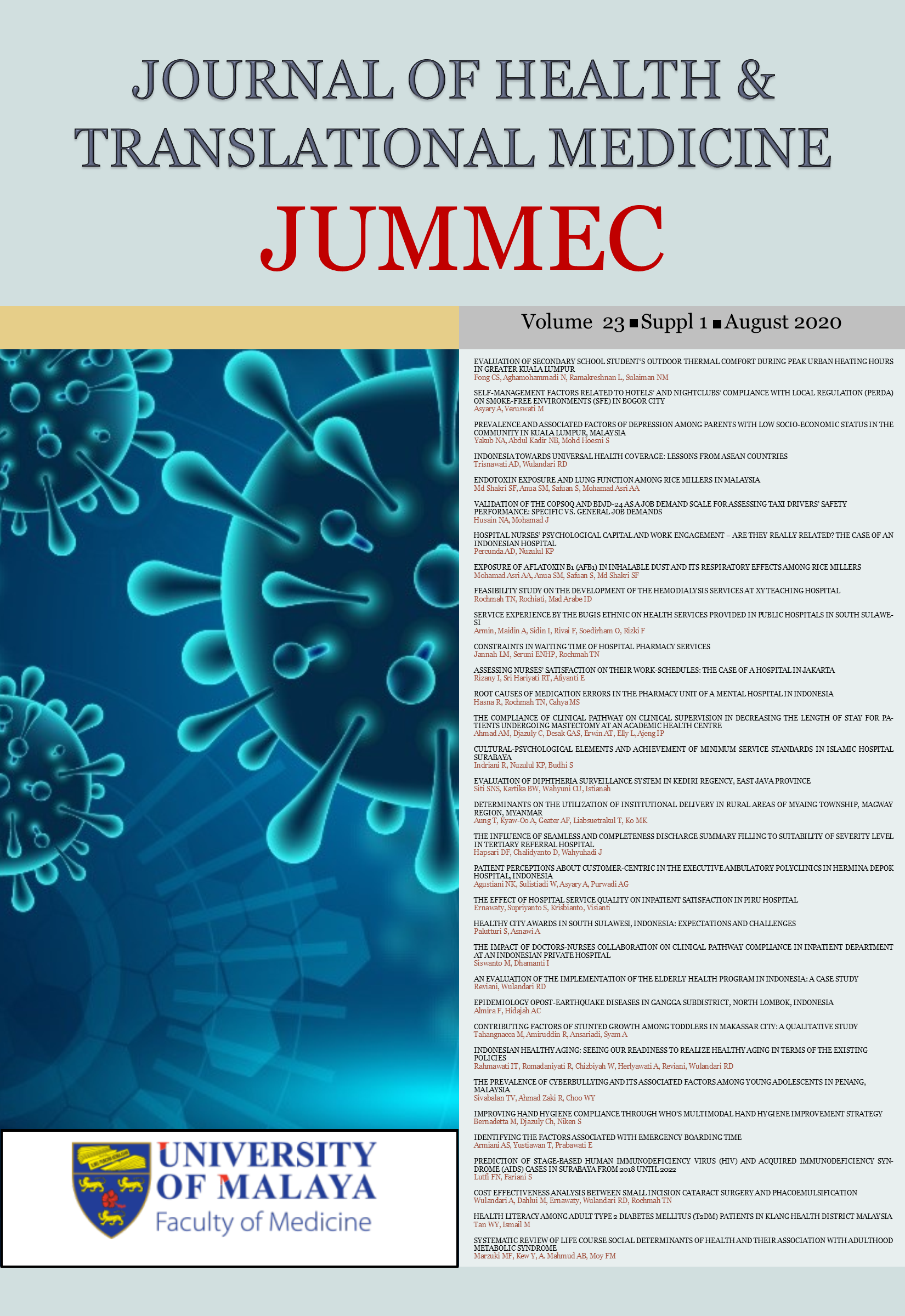SYSTEMATIC REVIEW OF LIFE COURSE SOCIAL DETERMINANTS OF HEALTH AND THEIR ASSOCIATION WITH ADULTHOOD METABOLIC SYNDROME
Keywords:
Social determinants of health, Metabolic syndrome, Life courseAbstract
Introduction: Metabolic Syndrome (MetS), refers to the clusters of metabolic abnormalities which increase the individual’s risk in developing cardiovascular diseases, and various types of cancers. Studies show that genetic, environmental, and social factors may also have a role in the pathogenesis of MetS, but the association between life course social determinants of health (SDH), and MetS, has yet to be established. The current systematic review aims to summarize the outcomes derived from previous studies which have links between life course SDH and MetS, and in that regard, this review also explores the common indicators of the SDH.
Methods: Three electronic databases were used: Medline, CINAHL, and Scopus. Articles published from 1st January 1990 until 10th January 2017 were utilised. These studies contained at least one single indicator of childhood structural determinants of health as the independent variable, and adulthood metabolic syndrome as the outcome variable. Only English articles were included.
Results: There were twelve articles were retrieved for analysis: three were from Asia, five were from Europe, and three were from the US. The commonest measurement of childhood SDH was noted to be parental socioeconomic status (SES), with some even reporting car, house, and sewing machine ownership as household SES. It is possible that women with SDH adversity throughout their life course may be associated with higher risks of MetS while the findings among men were inconclusive.
Conclusion: The association between MetS and SDH depends on gender, indicators of SDH, time of adversity, and geographic location. In order to achieve the UN’s Sustainable Development Goal on tackling NCD, policies to prevent MetS must include action for taking the SDH at all stages of life.
Downloads
Downloads
Published
Issue
Section
License
All authors agree that the article, if editorially accepted for publication, shall be licensed under the Creative Commons Attribution License 4.0 to allow others to freely access, copy and use research provided the author is correctly attributed, unless otherwise stated. All articles are available online without charge or other barriers to access. However, anyone wishing to reproduce large quantities of an article (250+) should inform the publisher. Any opinion expressed in the articles are those of the authors and do not reflect that of the University of Malaya, 50603 Kuala Lumpur, Malaysia.


